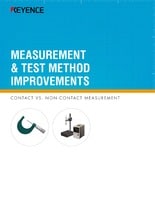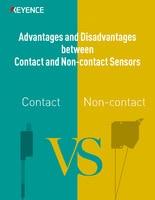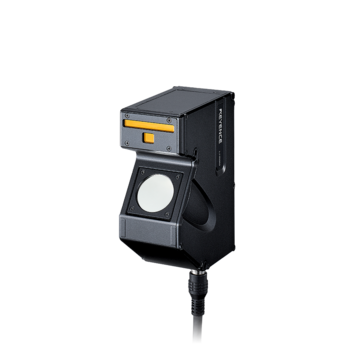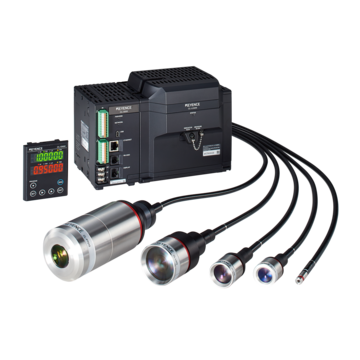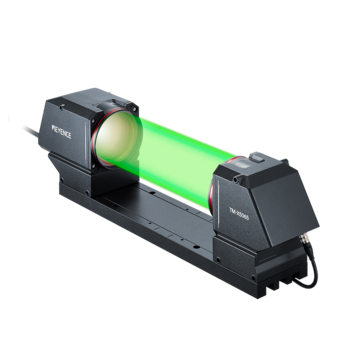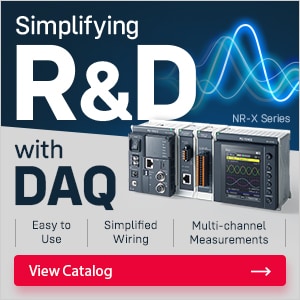Measurement Sensors
Dimension Measurement
Displacement Measurement
Different Types of Measurement Sensors and Applications
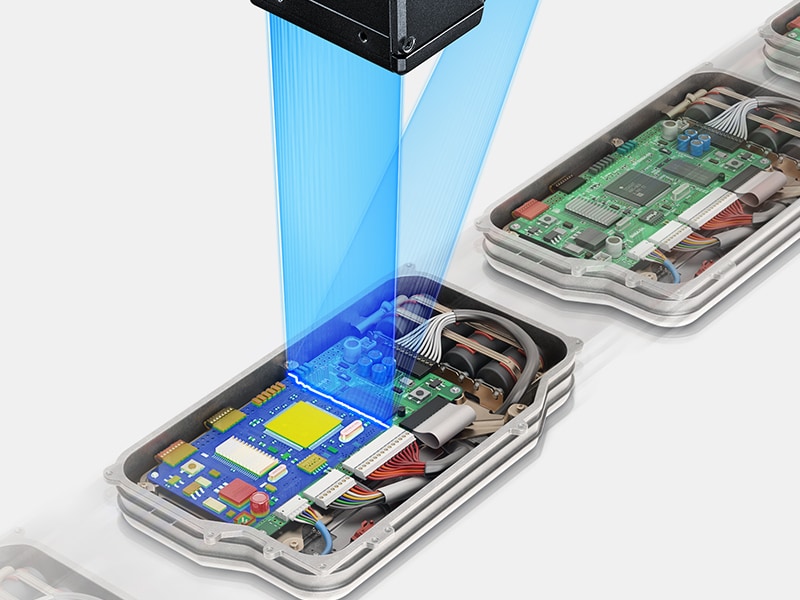
Sensors are used in almost every industry for a wide variety of applications—some of which we take for granted in our everyday lives. These devices are found in residential homes, offices, vehicles, medical facilities and equipment, manufacturing industries, and power plants.
Measurement sensors are so versatile and ubiquitous that today’s article will cover what they are and how measurement sensors are commonly used. We’ll also touch upon different applications.
What Are Measurement Sensors?
Measurement sensors are a generic term referring to different types of sensors that detect changes in the environment and respond to said changes by outputting some type of signal to another system—usually a data acquisition system.
As such, measurement sensors convert a physical phenomenon (such as sound or temperature) into a measurable analog voltage or digital signal. This signal is then further processed and converted into a legible display.
Imagine a microphone. While it’s not commonly thought of as such, microphones perfectly illustrate a measuring sensor’s functionality.
While they don’t capture dimensional measurements, microphones pick up sound waves and convert them into electrical signals. These signals can then be measured, amplified, transmitted, recorded, reproduced, or processed further in a variety of different ways.
A common mercury thermometer is another example of a more traditional measurement sensor. Admittedly, these thermometers don’t have an output so we can’t record their data using data acquisition systems.
Fortunately, modern solutions exist, allowing you to measure, store, and subsequently analyze various physical phenomena and properties.
We’re here to provide you with more details.
Reach out today!

Measurement Sensor Types
As stated at the beginning, sensors are a very big part of our everyday lives, and they’re so ubiquitous that most of us neglect their presence. Sensors, particularly measurement sensors, are implemented in our appliances, personal electronics, and home thermometers—simply put, they’re everywhere.
The same applies to industrial applications; sensors measure everything from temperature, humidity, position, alignment, distance, flatness, and pressure to load, force, strain, viscosity, and fluid flow. Here’s a complete breakdown of some of the most common measurement sensors:
Temperature Measurement Sensors
Temperature is the most measured physical property for various reasons, including manufacturing process control and environmental temperature. There are several different types of temperature measurement sensors, like thermocouples, thermistors, resistance temperature detectors and semiconductor temperature sensors.
Of course, not all sensors are suitable for every application, and each of listed types has its own temperature range, accuracy class, price point, and response—the latter of which plays a crucial role in sensor signal interpretation.
Infrared Sensors
Infrared (IR) sensors are incredibly versatile and applicable across different fields. Before diving into a rather long list of their applications, we must differentiate them by type: transmissive IR sensors and reflective IR sensors.
Transmissive IR sensors have an IR transmitter and an IR receiver facing each other, allowing the sensor to detect an object once it passes between the transmitter and receiver. Reflective IR sensors have the transmitter and receiver adjacent to each other and facing a particular object. Light is emitted from the transmitter, reflected from the object, and detected by the IR receiver.
IR sensors are rather versatile, and their applications include motion detection, gas detection, object detection, chemical analysis, and temperature measurement.
Ultrasonic Sensor
Ultrasonic sensors are commonly used as distance measurement sensors since they work as sonars—they generate high-frequency sound waves that are reflected from an object and received back by the sensor, which measures an echo.
The time interval, or time-of-flight, taken to transmit the sound and receive an echo helps determine the distance of an object. This doesn’t apply to passive ultrasonic sensors, which are mostly used to detect the presence of ultrasonic noise in certain applications.
Load Cells
Load cells are measuring sensors that convert force exerted by applying tension, compression, pressure, or torque into measurable electrical signals. These cells are commonly used in weighing systems, making them an integral part of industrial scales, lab balances, and applications in which force measurement is necessary.
It’s important to note that load cells are comprised of strain gauges, which measure the deformation of an object when the force is applied and convert said deformation into an electrical signal.
Encoders
Encoders convert mechanical motion into an electrical signal, allowing them to measure position and speed. Depending on the type, these measurement sensors can measure the rotational position of a shaft, its rotational speed, and linear movement.
Encoders are widely used in industrial control, robotics, photographic lenses, gates, elevators, and conveyor speed monitoring.
Position and Distance Measurement Sensors
Position and distance measurement sensors are specialized to accurately measure position and distance and usually feature exceptionally high resolutions, often ranging between 1 mm down to µm scale.
IR sensors are perfectly acceptable for precise position and distance measurement. However, if your application demands exceptionally high precision, we’d recommend using a laser displacement sensor, such as CL-3000 Series, or a laser triangulation sensor.
These sensors are best suited for quality control, automation, and material handling operations in which distance measurements are crucial.
Discover more about this product.
Click here to book your demo.

Measurement Sensor Applications
Sensors are all around us; they’re used in many industrial and residential devices and applications, including the automotive, medical, aerospace, defense, and agricultural industries, as well as light sensors in our phones or pressure sensors in our bathroom scales.
Position sensors are typically used to measure movement, displacement, position, and distance, but they’re also used for controlling the throttle, steering angle management, positioning of ramps and bridges, and measuring wind direction.
Pressure measuring sensors are used for measuring different kinds of pressure, while force sensors are commonly used to measure weight—by measuring the force that is applied. Temperature measurement sensors are the most widespread and commonly used sensors for measuring thermals associated with solids, liquids, or gases.
Temperature measurement sensors are everywhere; they’re in motors, personal electronics, industrial equipment, home appliances, electrical radiators, etc. Ultimately, for every measurable physical property, there’s a sensor capable of reading and measuring said property.
Implementing KEYENCE Measurement Sensors
KEYENCE is a worldwide leader in the development of factory automation and quality assurance equipment, ranging from automation sensors, measuring sensors and instruments, vision systems, data acquisition systems, laser markers, and digital microscopes.
The company offers a wide variety of measurement sensors for nearly every application, focusing primarily on non-contact measurements that suit the needs of modern, high-speed automation manufacturing. If you have any questions regarding measurement sensors, contact KEYENCE today.
Contact us to learn more about how our advanced technology can help take your business to the next level.
Contact Us
Related Downloads
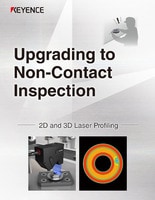
Conventional contact-type measuring systems and camera-based inspection have known issues. This guide uses different processes and target objects as examples to detail how laser profilers can solve these issues with non-contact 3D measurement. This is a perfect introductory guidebook for users new to laser profilers.
Related Products
Applications
Dimension Measurement
- Thickness and Width Measurement
- Step Height Measurement
- Inner and Outer Diameter Measurement
- Measuring Angles
- Meandering/Edge Measurement
Displacement Measurement
- Positioning and Stroke Length Measurement
- Vibration and Runout Measurement
- Deflection Measurement
- Measuring Eccentricity

